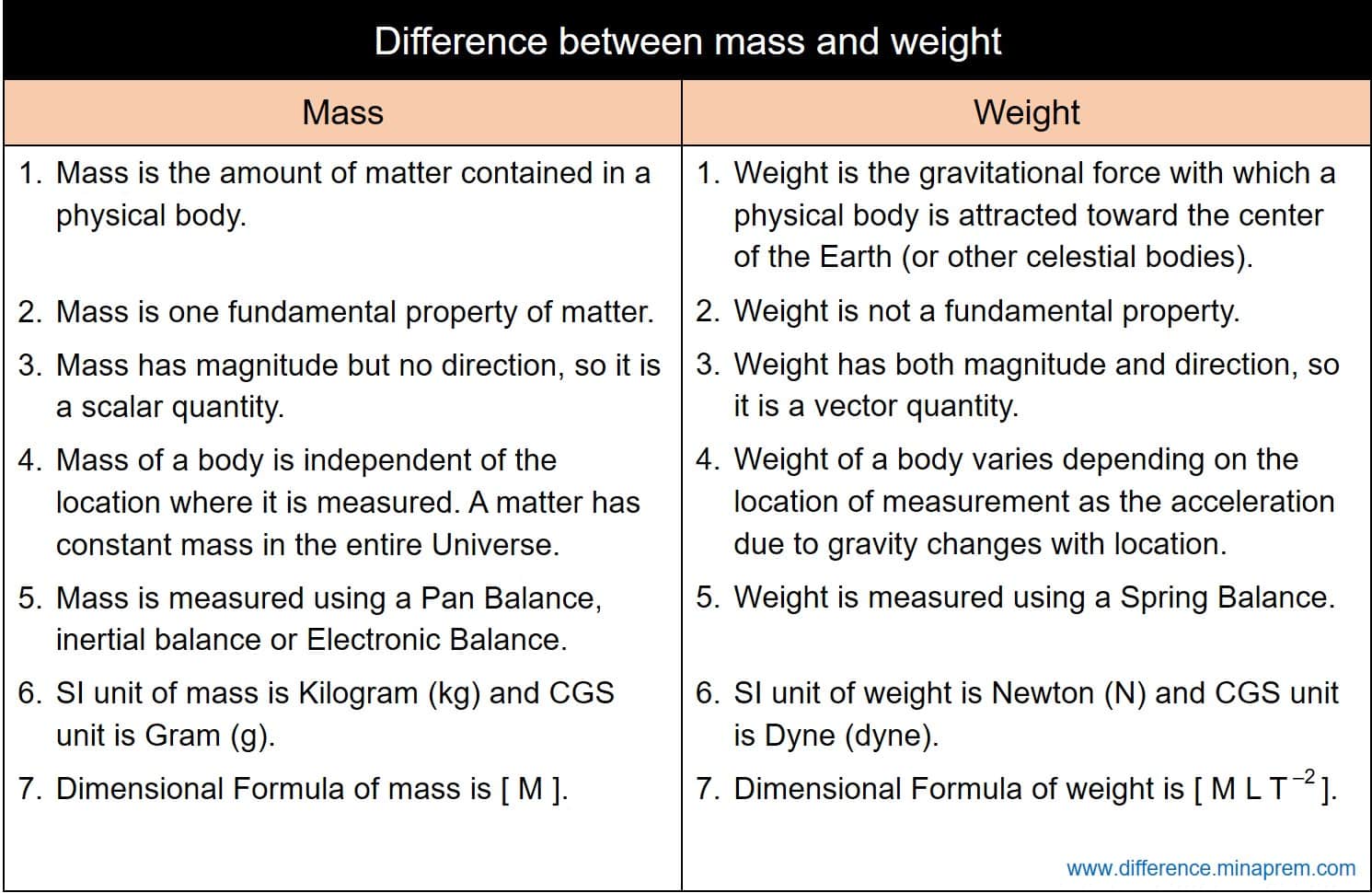By definition, a “matter” is any substance that has non-zero mass and occupies certain amount of space based on its volume. The amount of matter contained in a physical body is known as “mass”. Mass is a fundamental extensive property of every matter. A matter can exists in any one of four different states/forms, namely solid, liquid, gas, and plasma. Irrespective of its state, the Earth attracts every matter towards its center. Similar to the Earth, other celestial objects (Moon, Mercury, Venus, Pluto, Sun, Proxima Centauri, Barnard’s Star, Dwarfs, etc.) also attract matter towards their corresponding center. There always exists certain attraction force associated with it. This attraction force is different for different celestial objects. Even in a specific celestial object, this attraction force also varies with the distance of the matter from the center of the corresponding celestial body. This attraction force by which a matter is attracted towards the center of the Earth (or other celestial body, as the case may be) is known as “weight”. Thus, in true scientific sense, mass and weight are not same thing. While mass indicates the amount of matter exists within a physical body, weight indicates the force by which the same body is attracted by the Earth.
Weight is proportional to the mass, and at the same time, it is proportional to the acceleration due to gravity (g). In fact, weight can be obtained simply by multiplying the mass with the acceleration due to gravity. At the Mean Sea Level (MSL) of the Earth, this acceleration due to gravity is approximately g = 9.81 m/s2. With increase or decrease in height from MSL, the value of g changes. Accordingly, the weight of the matter changes although the mass remains same. Thus weight of a matter depends on where it is measured, while mass remains unchanged regardless of the location of measurement. So mass is a fundamental property of matter, but weight is one derived property. To exemplify, let us consider an arbitrary object that has mass m = 2.0 kg. At the MSL on Earth where gravitational acceleration is g = 9.81 m/s2, the same object will have weight of W = m × g = 2.0 × 9.81 = 19.62 N. If the same object is taken to the centre of the Earth, weight will be zero as gravitational acceleration at the Earth’s center is zero. However, the mass will remain unchanged (i.e. 2.0 kg). Similarly, if the object is weighed at the Moon, weight will be around 2 × (9.81/6) = 3.27 N because gravitational force of moon is almost six times lower than that of the Earth. Similarly, presence of other forces such as magnetic force, buoyance force, etc. can also influence weight of the body depending on their direction of action. However, mass of the body will remain unaltered so long as the material is not added to the object or taken out of the object or destroyed (to generate energy, as in nuclear reaction). Various similarities and differences between mass and weight are given below in table format.
Similarities between mass and weight
- Mass and weight are independent of physical state or form of matter (solid, liquid, gas, and plasma).
- Both depend on the amount of matter available within the object. In fact, mass indicates the amount of matter contained in a physical body. Weight is also proportional to the amount of matter contained in a physical body.
- Both mass and weight are measurable and quantifiable. There are several parameters in physics that cannot be directly measured or quantified. They can be expressed either using attributes or with the help of other quantifiable parameter. For example, sharpness, which cannot be measured directly. It can be expressed qualitatively using attributes like very sharp, blunt, etc. Indirectly, the wedge angle or edge radius can be measured, and these values can be used to indirectly indicate sharpness.
- Both have definite dimension and unit. These are not unitless or dimensionless parameters.
Differences between mass and weight
| Mass | Weight |
|---|---|
| Mass is defined as the amount of matter contained in a physical body. | Weight is defined as the gravitational force with which a physical body is attracted toward the center of the Earth (or other celestial bodies). |
| Mass is one fundamental property of matter. It is an extensive property. | Weight is not a fundamental property of matter. |
| Mass has magnitude but no direction, so it is a scalar quantity. | Weight has both magnitude and direction, so it is a vector quantity. |
| Mass of a body is independent of the location where it is measured. In fact, a matter has constant mass in the entire Universe. | Weight of a body varies depending on the location of measurement as the acceleration due to gravity changes with location. |
| Mass of a physical body can never be zero (unless it is moving at the speed of light, rest mass will be zero in such case). | Weight of a body can be zero if the resultant force acting on the same body is zero. For example, at Earth’s center or in artificial satellite, weight of any matter is zero even though the mass is not zero. |
| Mass is measured using a Pan Balance, inertial balance or Electronic Balance. | Weight is measured using a Spring Balance. |
| SI unit of mass is Kilogram (kg) and CGS unit is Gram (g). | SI unit of weight is Newton (N) and CGS unit is Dyne (dyne). Since weight is actually a force, so its unit is same with the unit of force. |
| Dimensional Formula of mass is [M]. | Dimensional Formula of weight is [M L T–2]. |
